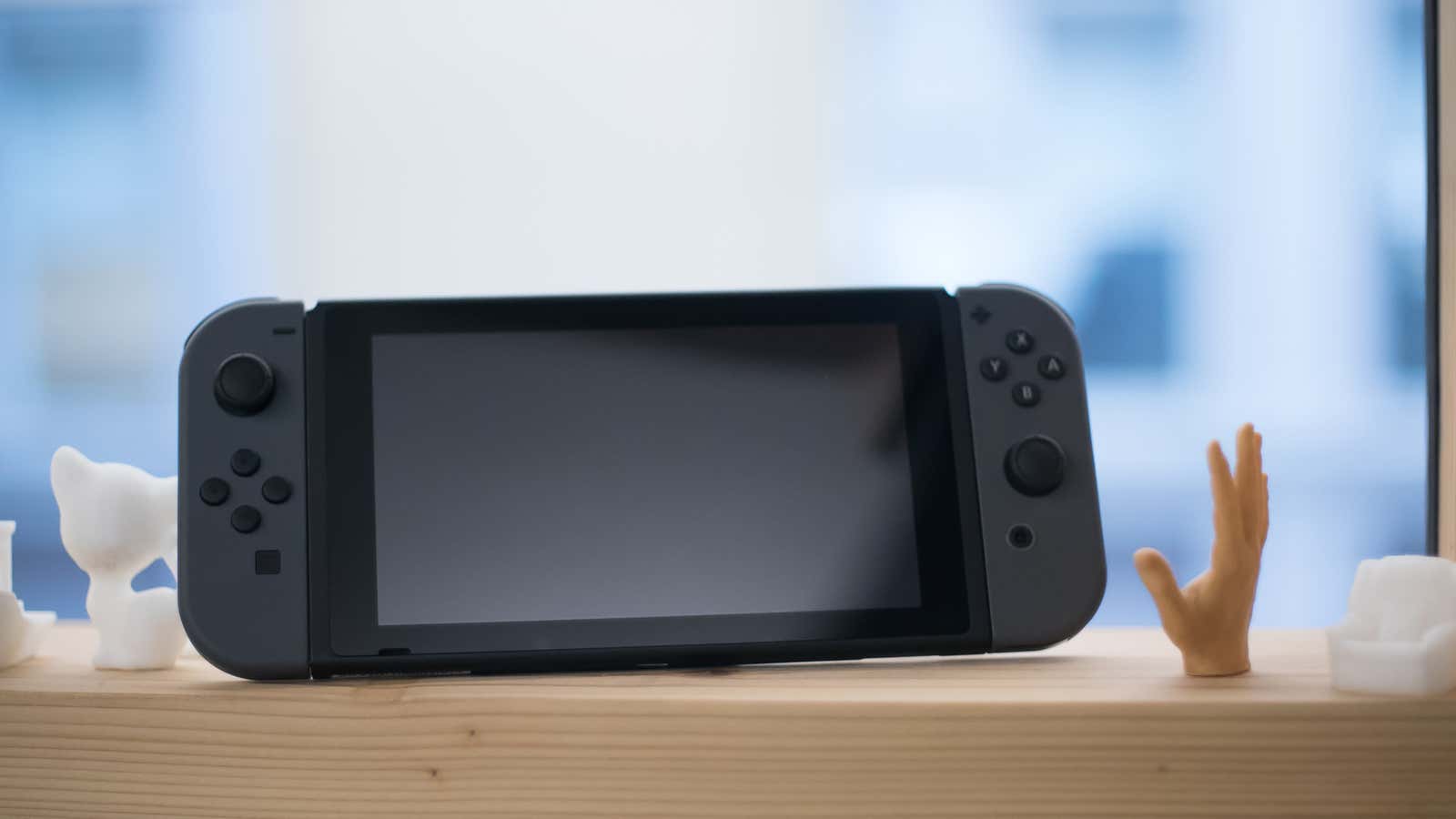Eleven years ago, Nintendo released a video game console that was probably the most influential piece of hardware it had put out since it put out its first one in 1983. The Nintendo Wii was like nothing anyone had ever seen before: you could play games as if you were in them—swing the controller like a baseball bat, and your character could hit a home run; lift your arm above your head and you could toss a ball up for a tennis serve.
Nintendo sold more Wiis than it did any other console it’s ever released, as the Wii inspired a legion of more casual gamers to have fun playing simple, engaging games. But in the intervening decade, those casual gamers found similar experiences on their smartphones (the iPhone didn’t exist when the Wii was released), and consoles have pretty much returned to the domain of the “hardcore” gamer, people who spend most of their time shooting strangers online in a litany of military games, or taming dragons and killing post-apocalyptic zombies.
There’s been little room for Mario in the living room for the last decade, and Nintendo has started to address this. Its last console, the Wii U, was its worst-selling one ever, and the company has recently, finally, started experimenting with mobile games, having a hand in releasing three in the last year.
But it seems that Nintendo has another idea for winning back over casual gaming consumers: Be wherever they are. This is what the Nintendo Switch, which was released Friday, March 3, tries to do. It marries aspects of the Wii, a traditional console, and mobile gaming, into one machine. It’s a wonderfully novel idea, but an exceedingly difficult one to pull off at a time when most people have powerful smartphones in their pockets.
Quartz spent the last few weeks with the Switch, figuring out if it was worth the money.
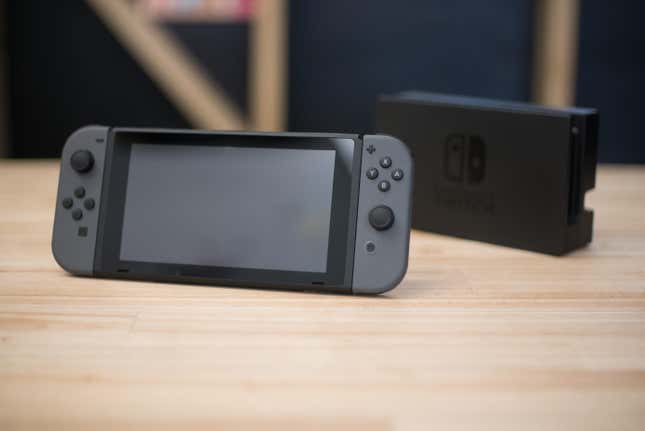
What’s good
It’s fun. If there’s one characteristic that every Nintendo console embodies (well, just about), it’s fun in gaming. Not that other consoles aren’t also fun, but there’s always a sense of whimsy and levity to Nintendo systems. Games like Snipperclips, where players have to work together to solve puzzles by cutting shapes out of their characters’ paper bodies, or 1-2-Switch, where you basically are competing to see who can flail a controller better than someone else, are so bizarre and are the sorts of things that only Nintendo would ever think of releasing. Nintendo inspired a generation of gamers to get up off the couch, move around, and really interact with games when it launched the Wii. Its main competitors launched similar offerings, but nothing matched the Wii’s ingenuity and fun—not even the Wii U. The Switch, which incorporates the best aspects of the Wii, along with more traditional gaming experiences, and the ability to play on the go, feels like it has the potential to surpass what the Wii achieved.
There are so many ways to play. Unlike just about any other major console released since kids in 1972 first fired up a Magnavox Odyssey and played some virtual ping-pong, the Nintendo Switch isn’t shackled to a television. It can be played in three ways: as a handheld tablet, as a small tabletop console where the controls slide off the tablet into your hands, and indeed plugged into a TV. There are games that make use of the new controllers, called Joy-Cons, in ways that are very similar to the flailing about on the Wii, and others that use each of them as separate controllers, allowing two people to play a game together on one machine.
The hardware is great—for me at least. Many users have reported connection problems with their Switches, as well as faulty screens and other issues. But I’ve had no such misfortune. The review unit I played with, as well as a few friends’ systems I’ve played on, have been error-free. The Switch is meant to be picked up, put in bags—parts of it slide off and are swung around—and the hardware feels sturdy, like it will handle years of being jostled.
You can take your games with you. If you’ve ever lived with someone else and had to battle over what to watch on television, being able to pick up your console and continue playing on a tabletop or in your hands is a wonderful experience that Nintendo absolutely nailed. It’s very easy to pick up the tablet and keep playing a game and get a nearly identical experience, whether you’re playing on a 60-inch TV or the Switch’s tiny tablet screen.
It’s addictive. I am terrible at Zelda games. I just wander around smashing pots and talking to village people until something kills me or I get bored. But the new Zelda game launched for the Switch, The Legend of Zelda: Breath of the Wild, has kept me enthralled like none of its predecessors. I can’t tell if it’s because the game is intrinsically better than all the others, or if it’s because I can pick up the Switch when some else is watching TV, or when I’m on the subway, or even over lunch. But I keep ducking back in for a few minutes here and there to see if I can figure out what I’m actually supposed to be doing other than cooking up dishes with all the wild mushrooms I find. A traditional console wouldn’t be able to coax me to play like this.
The cartridges taste bad. A surprising little addition: Nintendo coats Switch cartridges with a non-toxic bitter substance (that really tastes truly awful) so that small children will be less inclined to swallow them. It’s almost as if Nintendo knows that the people who loved their consoles growing up are getting to that age where they themselves have young kids.
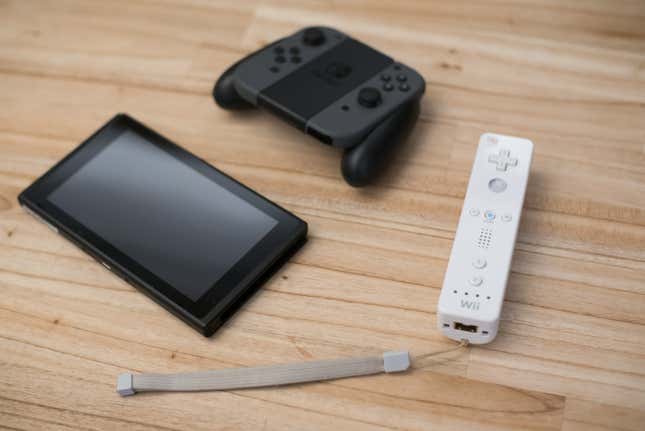
What’s not so good
It’s expensive. The Switch costs $300 in the US, and does not come bundled with any games. Comparatively, the relatively new Xbox One S costs $255 and comes bundled with one of the most popular games available, Battlefield 1. The Nintendo Wii, which came bundled with Wii Sports, debuted at $250 in 2006. It’s arguable that Wii Sports was the experience that made the Wii Nintendo’s best-selling console of all time: It was a lot of fun to whack tennis balls or roll bowling balls against friends, and the cost of this novel activity was built into the price of the machine, and helped people show off to their friends just how much fun owning a Wii could be. For a similar experience on the Switch, you would have to pick up Wii Sports’ spiritual descendant, 1-2-Switch, which, like most Switch games, costs $50. Having fun on the Switch very quickly becomes an expensive prospect.
1-2-Switch is very bad. It’s worth pointing out that the game that is supposed to highlight all the novel things you can do with the Switch is dull. The entire $50 game is a collection of mini-games that just involve watching videos on a screen and flailing your arms in the hope that you’re doing what you’re supposed to be doing. There’s almost no interactivity, no little avatars that look like you playing virtual games of tennis or bowling, instead just videos of random adults in strange outfits doing the exact same thing you’re doing in your living room. It’s odd.
There’s not much to play right now. Many of the marquee titles that Nintendo has highlighted for the Switch aren’t out yet. Mario Kart 8 will be released in April, Super Mario Odyssey won’t be out until the holiday season, and the actual launch dates for Switch versions of popular games—like FIFA, Skyrim, and Minecraft—have yet to be announced.
The new Zelda game is a truly excellent game that reviewers are already saying is one of the best games of all time, but there’s little else from the tranche of launch titles that really stand out. Super Bomberman R, Snipperclips, Just Dance 2017, and 1-2-Switch can be fun if you have someone to play with, but aren’t particularly compelling for repeat playing on your own.
The dock isn’t exactly portable. One of the best things about the Switch is that you can take it with you and play anywhere. Except, however, if you’re not planning on coming back home soon after. The Switch’s dock, with its bunch of cables used to charge the tablet and connect it to a larger screen, is not really something you can easily jam into a bag, as you can the tablet. If you want to bring your Switch on vacation, you’ll need to pull out the power cable from the dock and bring that with you.
The internal storage is tiny. The Switch comes with 32 GB of storage space, and after the system’s software, there’s about 26 GB of useable space. If you purchase the new Zelda game from the eShop, Nintendo’s online store on the Switch, and download it, you’ll only have about 13 GB left of space for as long as you own the console. There is a slot on the Switch where you can insert external microSD cards to add more storage, but it’ll be a hassle to have to keep swapping these in and out as your game library grows.
No 4K games. When playing in handheld-mode, the Switch’s tablet has a 720p screen. When you dock the Switch and connect it up to an external screen, it can output in 1080p high definition. But Nintendo’s rival consoles, the Xbox One S and Playstation 4 Pro, both support 4K video, allowing for far sharper gaming on supported televisions.
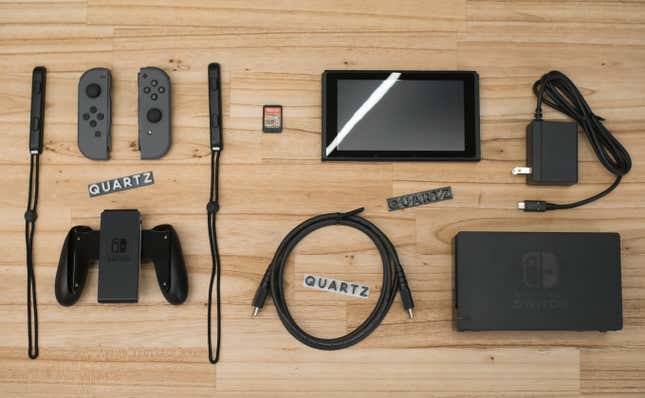
The controllers can get awkward. Swapping between gaming modes on the Switch is not the smoothest thing. Say you’re playing the console in tablet mode, with the Joy-Cons attached, and want to start playing on your TV. If you slide out the Joy-Cons and then dock the tablet, they won’t connect to the tablet—you have to dock it, and then remove them. It just gets confusing to have to remember what order to juggle the parts.
Using single Joy-Cons to play two-player games on one machine also gets a bit taxing after a while. The buttons on the tiny controllers are quite close to the joysticks, meaning complicated actions are rather difficult, as there isn’t a lot of room for error in button-pressing. The single Joy-Cons also only have two shoulder buttons (instead of four, as the Switch has when playing regularly) so some controls are different in this mode, and it’s not always obvious how the buttons have changed when switching between modes.
Limited social gaming. While individual games will have ways to play against others online, some are still building out their online options. For example, as I write this, I’m trying to play an online multiplayer game of Fast RMX, a futuristic racing game, but when my Switch tries to look for online opponents, eventually it times out and the system throws up an error message.
There’s also the issue that it’s almost impossible to find your real-life friends on the Switch and play games with them. First, the only way right now to connect with friends is to know their unique 12-digit code and manually type it into your machine. Then when you’ve added them, there’s nothing you can actually do with them—you can just see when they last played a game. On the Switch, the easiest way to play against a friend is to be in the same room and connect machine-to-machine.
The internet is an afterthought. There’s no web browser, you can’t use any streaming services, or check your email. Though that may not necessarily be a bad thing on a device designed for mobile gaming.
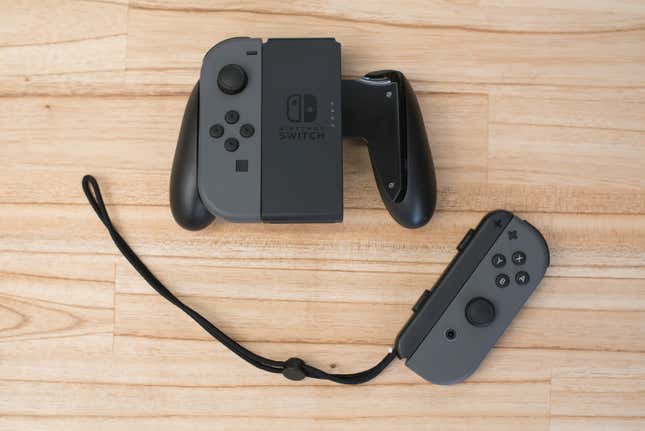
Buying games online is strange. To buy a game on the eShop, you have to select the game you want, and then add value to your account before you can purchase it. It’s sort of like a Starbucks loyalty card that you have to refill every single time you use it, without any loyalty benefits. You can choose to add larger amounts of money so you don’t have to go through this strange process every time, but it’d be a lot easier if Nintendo just included the option to store a credit card on file.
My phone is more convenient. I’ve already seen a few people playing Switches on the subway, and they’re having to rush for seats or wrap their entire arms around a pole so that they can properly play with two hands. When a seat has been available, I’ve sat and played a bit of Zelda on my commute, but I keep finding myself putting the Switch down and picking up my phone to check tweets, emails, and other things. The casual gamer that so fell in love with the Wii did not buy the Wii U, partially because it was a clunky machine, but also mainly because they could now play fun, engaging, and not-too-complicated games on their phones. My iPhone 7 Plus has a screen that’s less than an inch diagonal smaller than the Switch’s screen. It can also play FIFA and Minecraft, and it even has its own Super Mario game. It really comes down to whether you feel like physical controls are worth carrying a second device around in your bag.
Should you get one?
I came into this review wanting to recommend the Switch, because it’s such a novel piece of hardware that is unlike anything I’ve ever tried. But it’s difficult to recommend the Switch—unless you absolutely love the Zelda or Bomberman franchises. That being said, by the holiday season, it’s possible that this will be the most sought-after console on the market, as there will be a new Super Mario, Mario Kart, and Sonic games, as well as the popular third-party titles.
The Nintendo Switch is an excellent piece of hardware, and in many ways, feels like what Nintendo was aiming to achieve with the Wii U, although the technology was not quite there yet. It may well end up being as popular as the Wii—early sales forecasts seem to indicate it had a strong debut—but right now, there’s probably not enough to keep me playing it regularly for the next few years. Right now the only switch I’m making is back to my Xbox.
